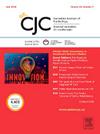Impact of High-Sensitivity Cardiac Troponin I Elevation After On- and Off-Pump Coronary Artery Bypass Grafting on Long-Term Prognosis
IF 5.8
2区 医学
Q1 CARDIAC & CARDIOVASCULAR SYSTEMS
引用次数: 0
Abstract
Background
Postoperative myocardial injury is correlated with long-term prognosis after coronary artery bypass grafting (CABG) and is diagnosed according to troponin levels, which vary substantially upon surgical strategies. We aimed to explore the troponin I cutoff values for prognostically significant myocardial injury separately in on-pump and off-pump procedures with the use of a high-sensitivity assay (hs-cTnI).
Methods
Patients who underwent isolated CABG from 2018 to 2020 with available perioperative hs-cTnI measurements were included in this study. We explored the relationships between hs-cTnI levels and different outcomes. To identify hs-cTnI threshold levels indicative of higher risks, restrictive spline regressions were performed for on-pump and off-pump procedures.
Results
A total of 7813 patients were included with a median follow-up of 2.7 years (interquartile range 1.7-3.3 years), 218 (2.8%) of whom died. Adjusting for clinical variables, the study found a significant association between peak hs-cTnI levels within the first 48 hours after surgery and all end points. The spline regressions demonstrated that the hs-cTnI levels measured within 48 hours after surgery that were associated with a hazard ratio of more than 1.00 for all-cause death were 1446 ng/L (55.6 × upper reference limit [URL], 95% confidence interval [CI] 45.0-106.5 × URL) for on-pump and 564 ng/L (21.7 × URL, 95% CI 21.0-30.2 × URL) for off-pump.
Conclusions
Elevated hs-cTnI levels after CABG were associated with poorer longer-term outcomes. A prognosis-relevant hs-cTnI cutoff value within 48 hours after CABG for on-pump is significantly higher than that for off-pump.

冠状动脉旁路移植术后高敏心肌肌钙蛋白 I 升高对长期预后的影响
背景:术后心肌损伤与冠状动脉旁路移植术(CABG)后的长期预后相关,可通过肌钙蛋白水平诊断,而肌钙蛋白水平因手术策略的不同而有很大差异。我们的目的是利用高灵敏度检测法(hs-cTnI)分别探讨在体外循环和非体外循环手术中具有预后意义的心肌损伤的肌钙蛋白 I 临界值:本研究纳入了2018年至2020年期间接受孤立CABG手术的患者,并对其进行了围术期hs-cTnI测量和随访。我们探讨了 hs-cTnI 水平与不同预后之间的关系。为了确定表明风险较高的 hs-cTnI 临界水平,我们对泵上和泵下手术进行了限制性样条回归:共纳入 7813 名患者,中位随访时间为 2.7 年(四分位间距 [IQR]:1.7-3.3 年),其中 218 人(2.8%)死亡。在对临床变量进行调整后,研究发现术后 48 小时内的 hs-cTnI 峰值水平与所有终点之间存在显著关联。曲线回归结果显示,术后48小时内测得的hs-cTnI水平与全因死亡的危险比超过1.00,其中,泵上手术为1,446ng/L(55.6×参考上限[URL],95% CI:45.0-106.5),非泵上手术为564ng/L(21.7×URL,95% CI:21.0-30.2):结论:CABG术后hs-cTnI水平升高与较差的长期预后有关。与预后相关的hs-cTnI临界值在CABG术后48小时内,体外循环下的hs-cTnI临界值明显高于非体外循环下的hs-cTnI临界值。
本文章由计算机程序翻译,如有差异,请以英文原文为准。
求助全文
约1分钟内获得全文
求助全文
来源期刊

Canadian Journal of Cardiology
医学-心血管系统
CiteScore
9.20
自引率
8.10%
发文量
546
审稿时长
32 days
期刊介绍:
The Canadian Journal of Cardiology (CJC) is the official journal of the Canadian Cardiovascular Society (CCS). The CJC is a vehicle for the international dissemination of new knowledge in cardiology and cardiovascular science, particularly serving as the major venue for Canadian cardiovascular medicine.
 求助内容:
求助内容: 应助结果提醒方式:
应助结果提醒方式:


